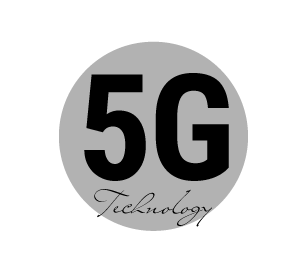
5G Technology
- 5G is the fifth generation of cellular technology, and it is the latest and most advanced wireless communication standard. It is designed to provide faster speeds, lower latency, and greater capacity than previous generations of cellular technology.
- 5G uses a variety of technologies and frequency bands to deliver its improved performance, including millimeter wave bands, sub-6 GHz bands, and low-band spectrum. It also uses advanced technologies such as beamforming and Massive MIMO (Multiple Input, Multiple Output) to improve signal quality and coverage.
- 5G networks are designed to support a wide range of applications and use cases, including enhanced mobile broadband, the Internet of Things (IoT), and mission-critical communications.
- 5G networks are being deployed around the world, and they are expected to have a significant impact on a variety of industries and applications. They are expected to enable new services and business models, and to drive economic growth and innovation.
- 5G technology is still in its early stages of deployment, and it is expected to continue evolving and improving over the coming years. It is expected to coexist and be interoperable with previous generations of cellular technology, allowing for a smooth transition to the new standard.
Overall, 5G technology represents a significant step forward in wireless communication, and it is expected to have a wide-ranging impact on various industries and applications.
Some Of The Key Differences Between 5G, 4G and 3G
Speed: One of the main differences between 5G, 4G, and 3G is the speed of the networks. 5G networks are designed to be much faster than 4G and 3G networks, with peak speeds that are several times faster than 4G.
Latency: Latency refers to the delay between when a request is made and when a response is received. 5G networks have much lower latency than 4G and 3G networks, which makes them better suited for applications that require fast response times, such as virtual reality and telemedicine.
Capacity: 5G networks are designed to have much greater capacity than 4G and 3G networks, which means they can support a larger number of devices and a higher volume of data traffic.
Frequency bands: 5G networks use a variety of different frequency bands to deliver their improved performance, including millimeter wave bands, sub-6 GHz bands, and low-band spectrum. 4G and 3G networks, on the other hand, primarily use lower frequency bands.
Technologies: 5G networks use advanced technologies such as beamforming and Massive MIMO (Multiple Input, Multiple Output) to improve signal quality and coverage. 4G and 3G networks do not use these technologies.
Overall, 5G represents a significant improvement over 4G and 3G in terms of speed, latency, capacity, and the use of advanced technologies. It is expected to enable new services and business models, and to drive economic growth and innovation.
5G Usage Areas
Enhanced mobile broadband: One of the main use cases for 5G is enhanced mobile broadband, which refers to the use of 5G networks to deliver high-speed internet and other communication services to mobile devices.
Fixed wireless broadband: 5G can be used to provide high-speed internet access to homes and businesses without the need for a physical connection to a broadband network.
Private networks: 5G can be used to create private networks for specific industries or organizations, providing them with dedicated and secure connectivity.
Internet of Things (IoT): 5G is expected to be a key enabler for the Internet of Things (IoT), as it will provide the high-speed, low-latency connectivity needed to support the large number of devices that are expected to be connected to the IoT.
Mission-critical communications: 5G is expected to be used for mission-critical communications, such as those used by first responders and other public safety professionals. It is expected to be able to support the high levels of reliability and availability needed for these applications.
Industrial automation: 5G is expected to be used to support industrial automation and other applications in the manufacturing sector, as it will provide the high-speed, low-latency connectivity needed to support real-time control and monitoring.
Connected vehicles: 5G is expected to be used to support connected and autonomous vehicles, as it will provide the high-speed, low-latency connectivity needed to support real-time decision-making and safety-critical communications.
Virtual reality and augmented reality: 5G is expected to be used to support virtual reality (VR) and augmented reality (AR) applications, as it will provide the high-speed, low-latency connectivity needed to support immersive experiences.





